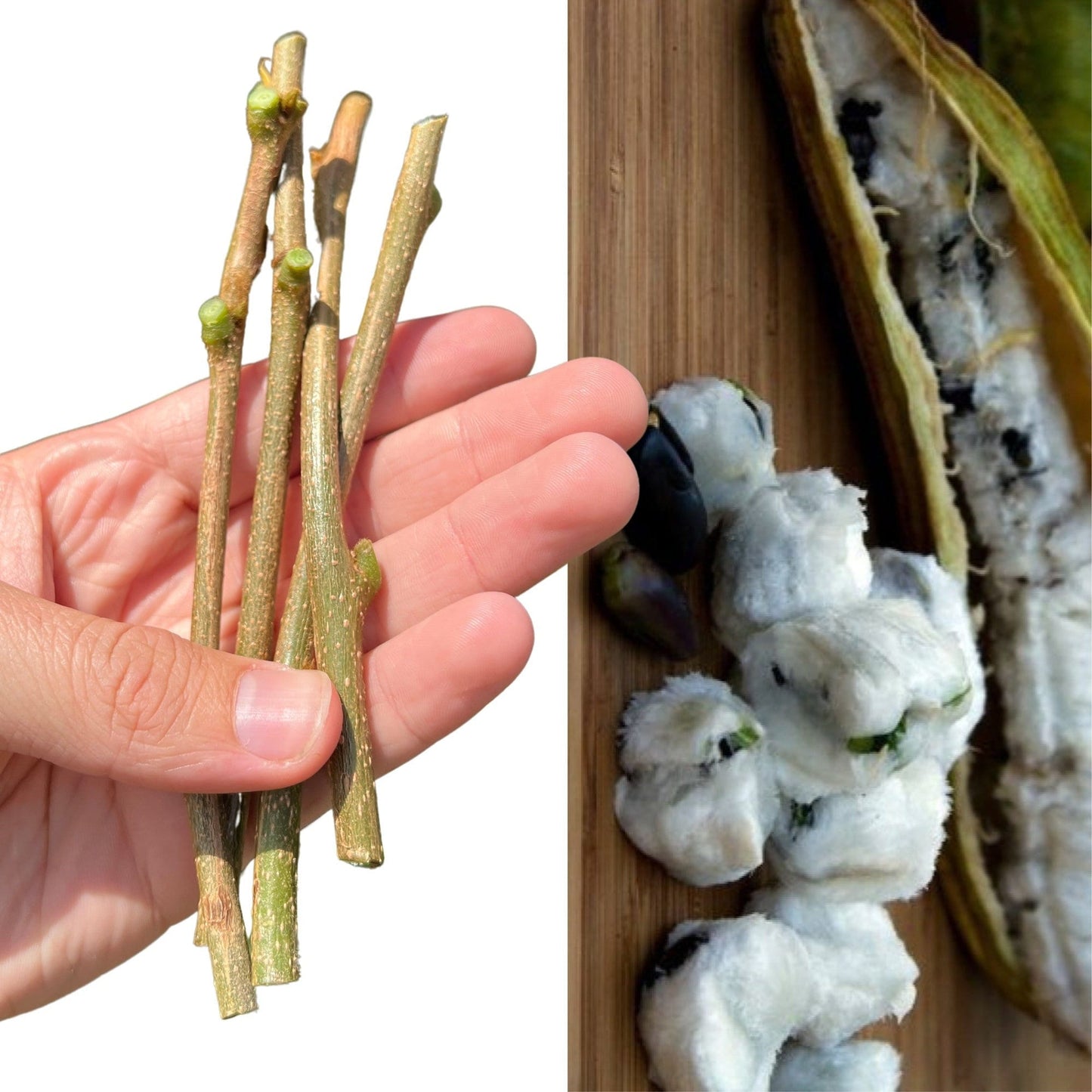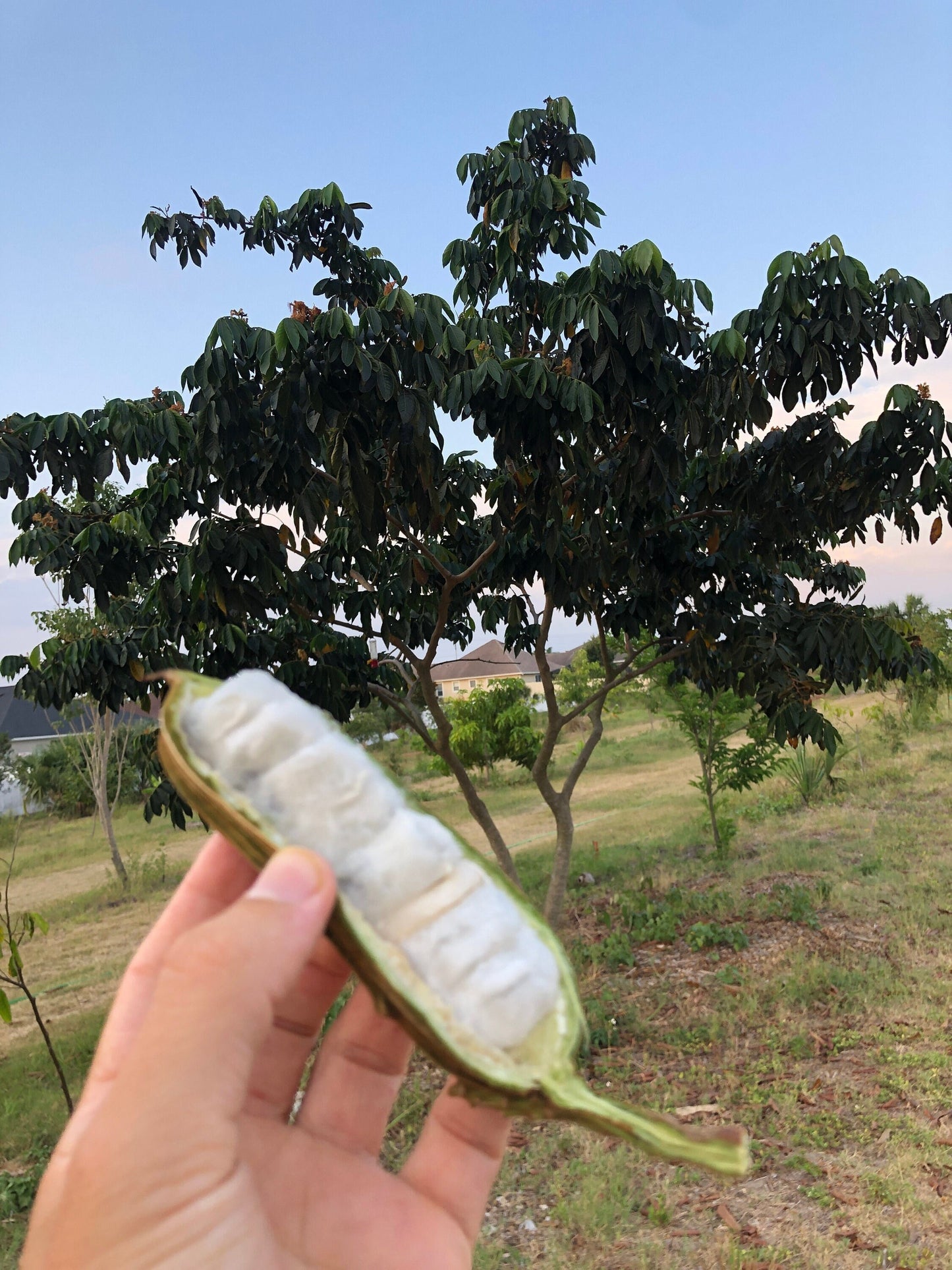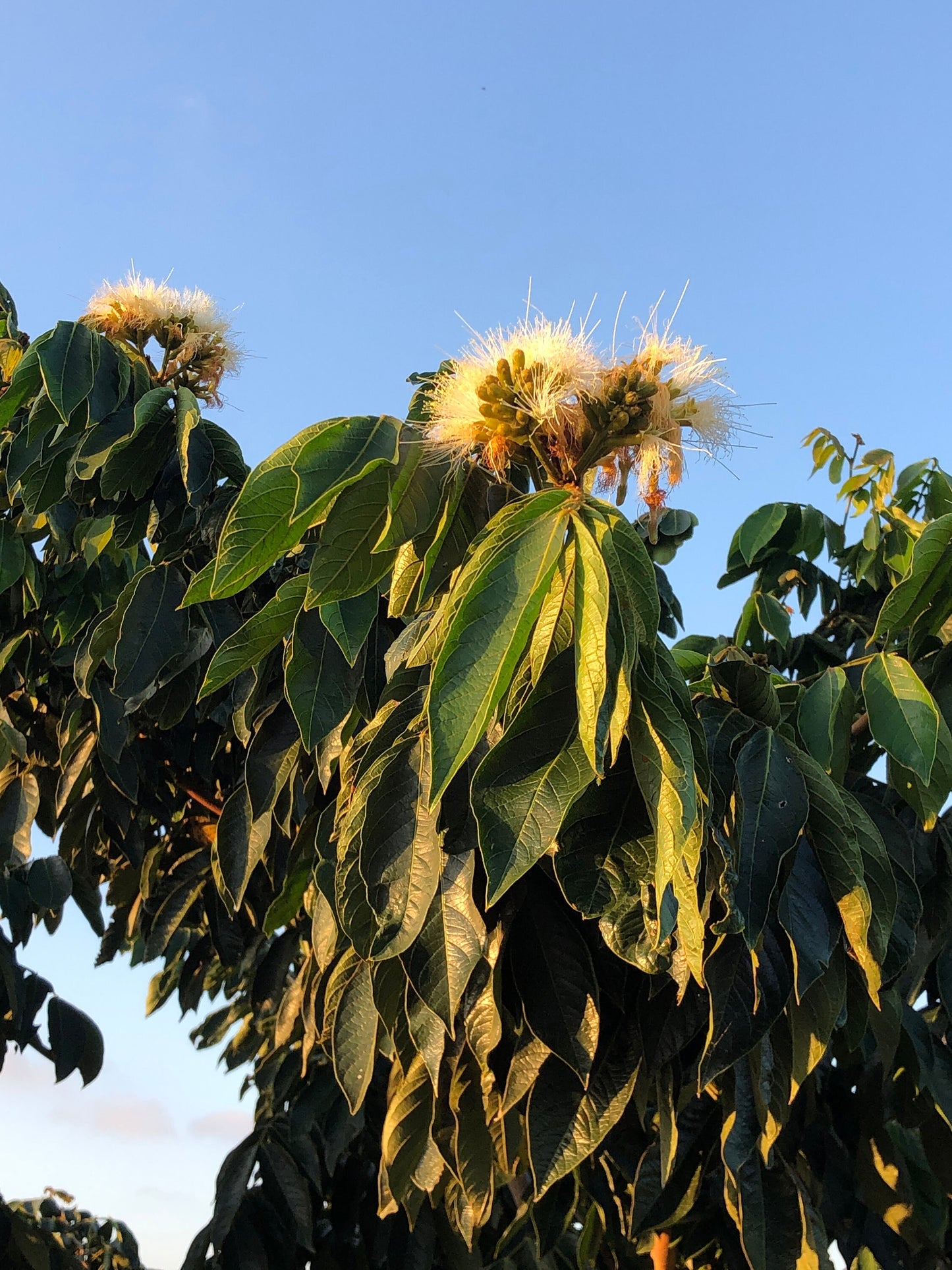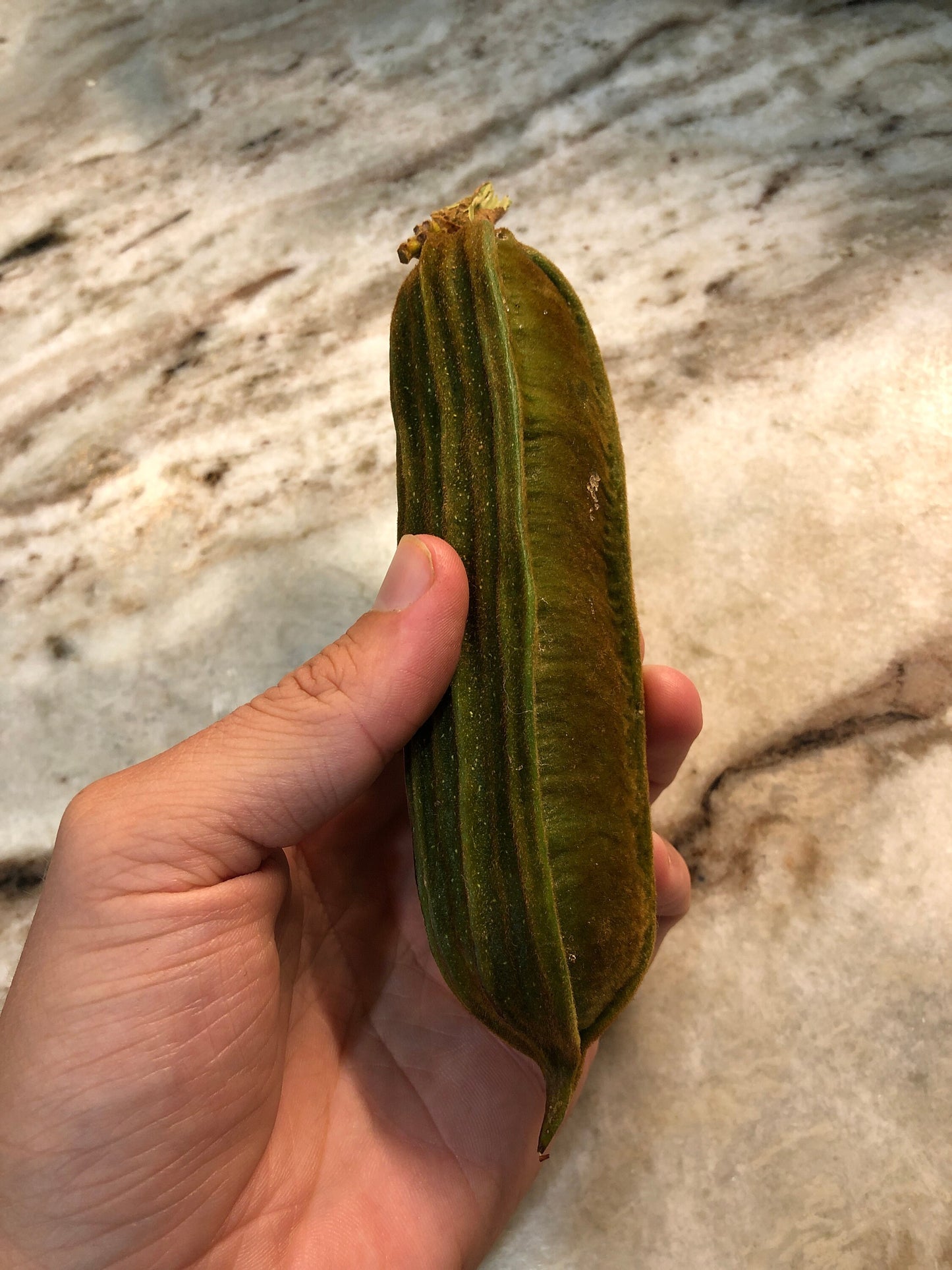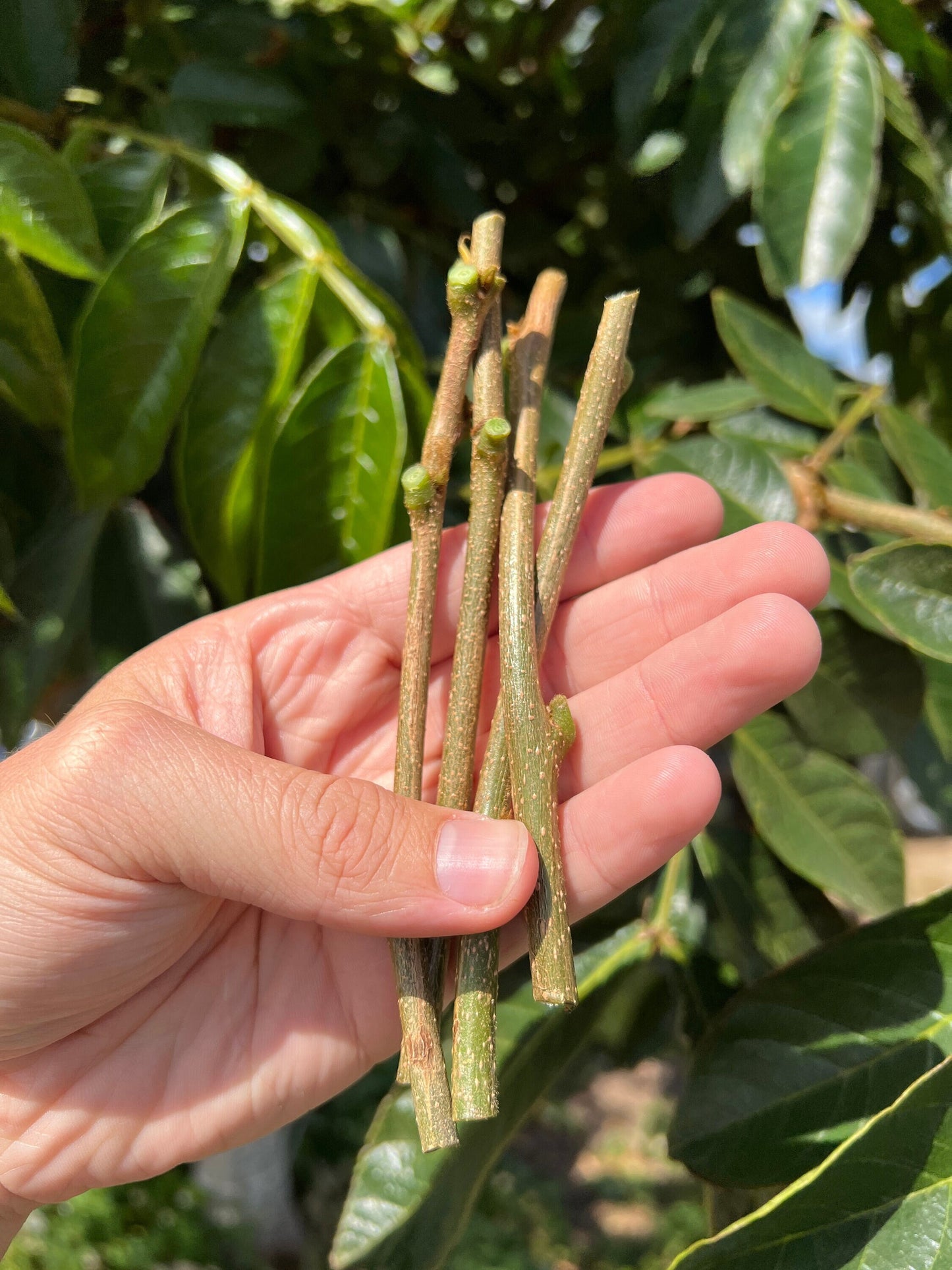Ice Cream Bean - 3 cuttings (Inga Feuillei)
Ice Cream Bean - 3 cuttings (Inga Feuillei)
Couldn't load pickup availability
Inga feullei, named after the French botanist Louis Feuillée, is a species of tree in the Fabaceae family, commonly known as pacay or the ice-cream bean tree. It is native to the Andean valleys of northwestern South America and is well known for its edible white pulp contained within its long seed pods. Like other trees in the Inga genus, Inga feuilleei has nitrogen-fixing roots, which improve soil fertility and benefit agricultural ecosystems.
Botanical Description
Pacay is a medium to large-sized tree, reaching heights of up to 18 meters (59 feet). The tree has an indumentum of pubescent hairs that are rusty in color, found on young branchlets, the leaf rachis, and inflorescences. The leaves consist of 3–5 pairs of oblong-elliptic leaflets, with the terminal leaflet measuring 10–20 cm (4–8 inches) in length. The inflorescences form in spikes up to 3 cm (1.2 inches) long. The pods are typically flat and exceed 20 cm (8 inches) in length.
Fruit and Culinary Uses
The pods of Inga feuilleei contain a soft, sweet, cotton-like pulp, which gives rise to the name "ice-cream bean" due to its smooth texture and pleasant flavor. The fruit is widely consumed in regions where it grows, either fresh or processed. In Central America, the seeds are often cooked and eaten as a vegetable, while in Mexico, they are roasted and sold outside theaters as a popular snack. In Costa Rica, the fruit is called guaba and is traditionally associated with good luck.
Ecological and Agricultural Benefits
Inga feuilleei is a fast-growing, highly adaptable tree that provides multiple environmental and economic benefits:
-
It thrives near riverbanks, benefiting from year-round irrigation.
-
It is a nitrogen-fixing species, enhancing soil fertility by increasing nitrogen levels, making it beneficial for intercropping systems.
-
The tree is drought-tolerant, fire-resistant, and resistant to many diseases.
-
Its rapid growth and dense canopy provide valuable shade, particularly for crops like coffee plantations.
-
In Mexico, workers on coffee plantations can double their annual income by selling Inga pods, making it an economically important species.
Resilience and Cultivation
Pacay trees are highly resilient, capable of growing in diverse soils and tolerating extreme conditions. When mature, the tree withstands temperatures up to 30°C (86°F), although young trees are vulnerable to cold damage. Their ability to thrive in neglected or underutilized land makes them ideal for sustainable agriculture and food security.
Due to their high fruit yield and minimal maintenance requirements, Inga trees are considered a reliable food source, especially in difficult growing conditions. Their long lifespan ensures continuous fruit production, making them a valuable asset for both subsistence farmers and commercial growers.
